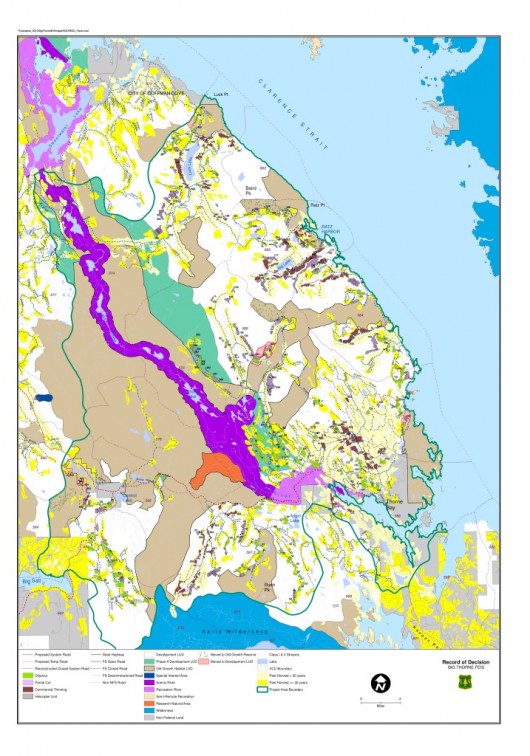Citing potential concerns over wolf habitat, Alaska’s Regional Forester has directed Forest Service officials to evaluate new information before moving forward with the Big Thorne timber sale on Prince of Wales Island.
July’s Big Thorne Record of Decision stands, but the actual timber sale will be delayed while the Forest Service looks into the effects of proposed logging activity on deer and, subsequently, wolves.
In a Sept. 30th letter, Regional Forester Beth Pendleton wrote that she affirms the ROD, which was announced this summer by Tongass Forest Supervisor Forrest Cole. But because of new information she said was submitted by a former state biologist, she wants implementation of the project delayed while the Forest Service reviews that information.
In her letter to Larry Edwards of the Sitka Greenpeace office, Pendleton wrote that David Person’s detailed statement about how deer and wolf habitat is calculated has some information that the Forest Service previously considered. However, Person never before concluded that “the Big Thorne timber sale … represents the final straw that will break the back of a sustainable wolf-deer, predator-prey ecological community on Prince of Wales Island.”
Pendleton wrote that she can’t ignore that new information.
Larry Edwards, however, said that information isn’t actually new.
“It was available,” he said. “We included a lot of these documents as exhibits in our scoping comments in early 2012, and our comments on the draft EIS at the end of 2012. The handwriting was on the wall from those. It was apparent what was happening there.”
What Edwards said is happening, is that the populations of deer and wolves on Prince of Wales Island are at a tipping point, “and that Dr. Person expects that the Big Thorne project is big enough, in relation to the cumulative impacts that have already happened … over the past 60 years …, that this project is enough to push that predator-prey dynamic over the edge.”
If it eventually moves forward, the stalled Big Thorne timber sale would produce up to 150 million board feet (mmbf), coming from more than 6,000 acres of old growth and more than 2,000 acres of second growth forest on POW.
Loggers and mill operators like those numbers, but five conservation groups submitted a joint appeal to July’s Record of Decision, including the statement from Person, who is a former Alaska Department of Fish and Game biologist.
Owen Graham of the Alaska Forest Association said he was surprised by the decision, because current state Fish and Game biologists were not worried about wolf populations. He said the small mills are in need of new wood to stay in business.
Graham said he hopes the federal agency will be able to get through the new paperwork quickly and get the sale moving again. However, with the federal shutdown, many Forest Service employees are not at work and there’s no telling right now how soon they will return.
Once it’s able to begin, the Forest Service review will involve the Interagency Wolf Task Force, and will look closely at Person’s statement to determine whether it includes significant new information. If it does, that could trigger a supplemental Environmental Impact Statement for the project.
The harvest area includes timber stands near Coffman Cove and Thorne Bay. It allows construction of 46 miles of road, which includes reconstruction of about 36 miles. According to the Forest Service, none of that harvest would take place in inventoried roadless areas.
When he announced the Record of Decision in July, Cole had hoped that the project could be awarded this fall, with logging started by the end of this year. With the appeals and now the review, when the project might happen, if ever, is in question.
For more information, go to http://www.fs.usda.gov/tongass/






